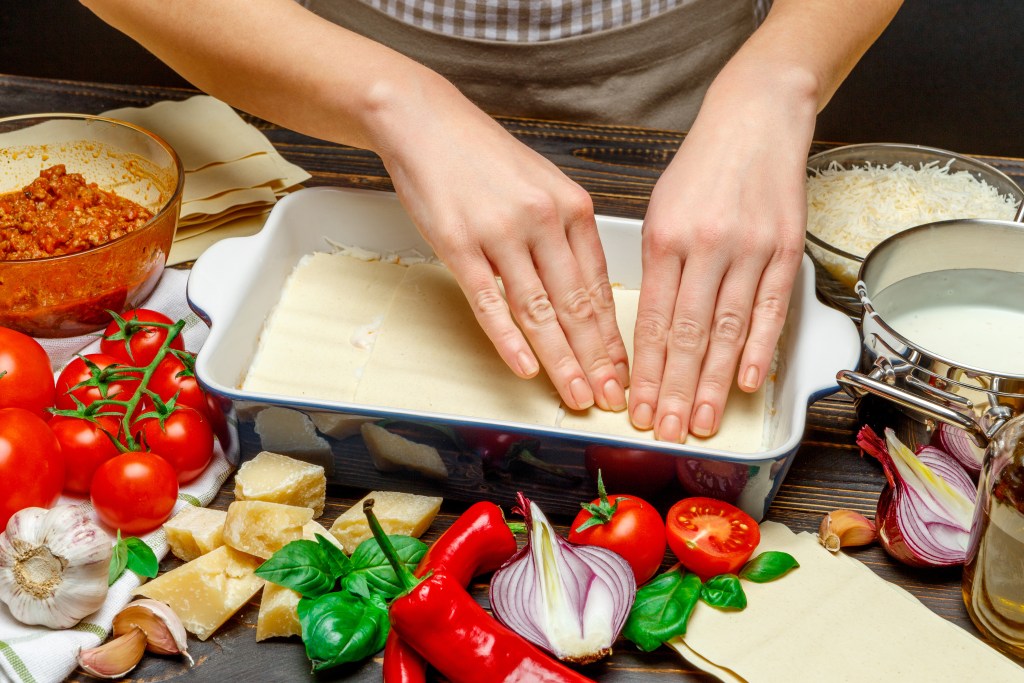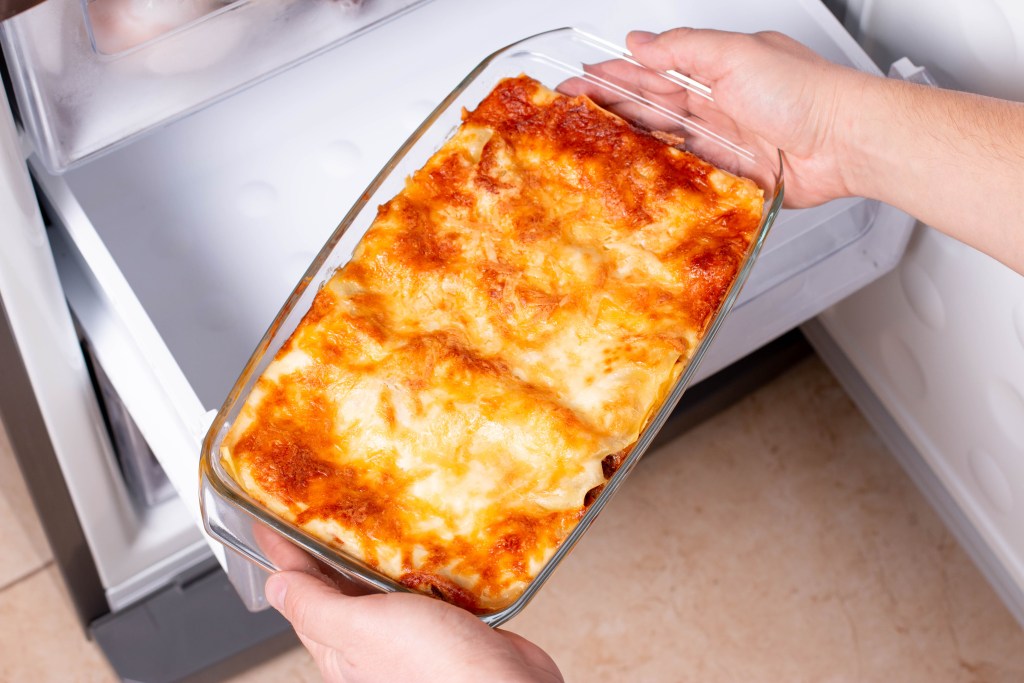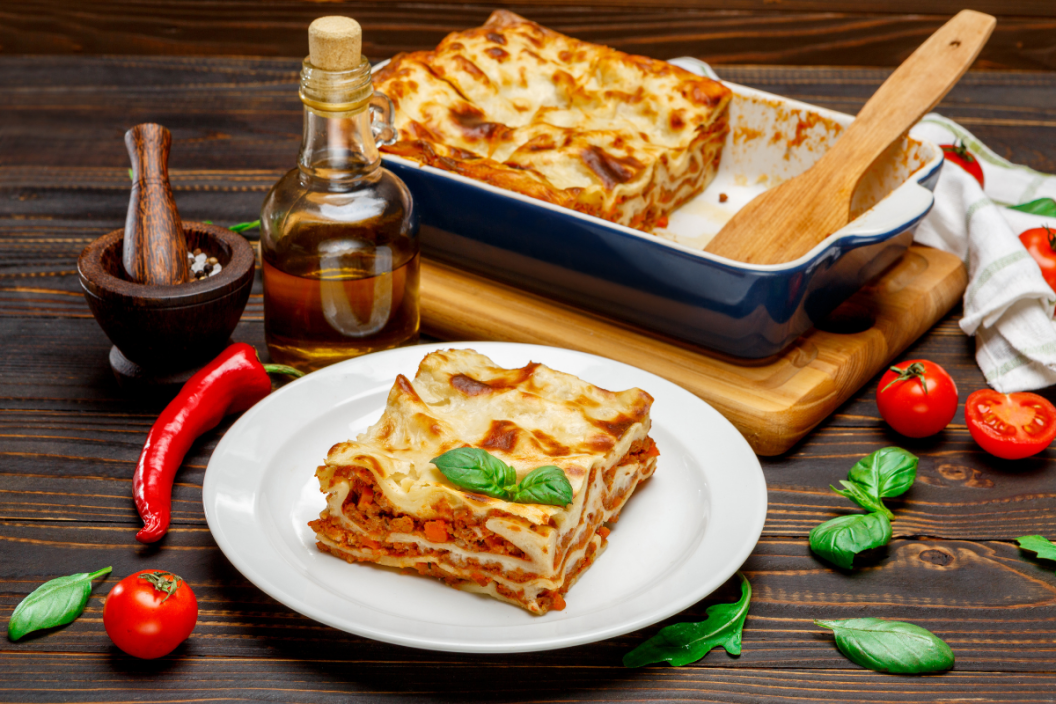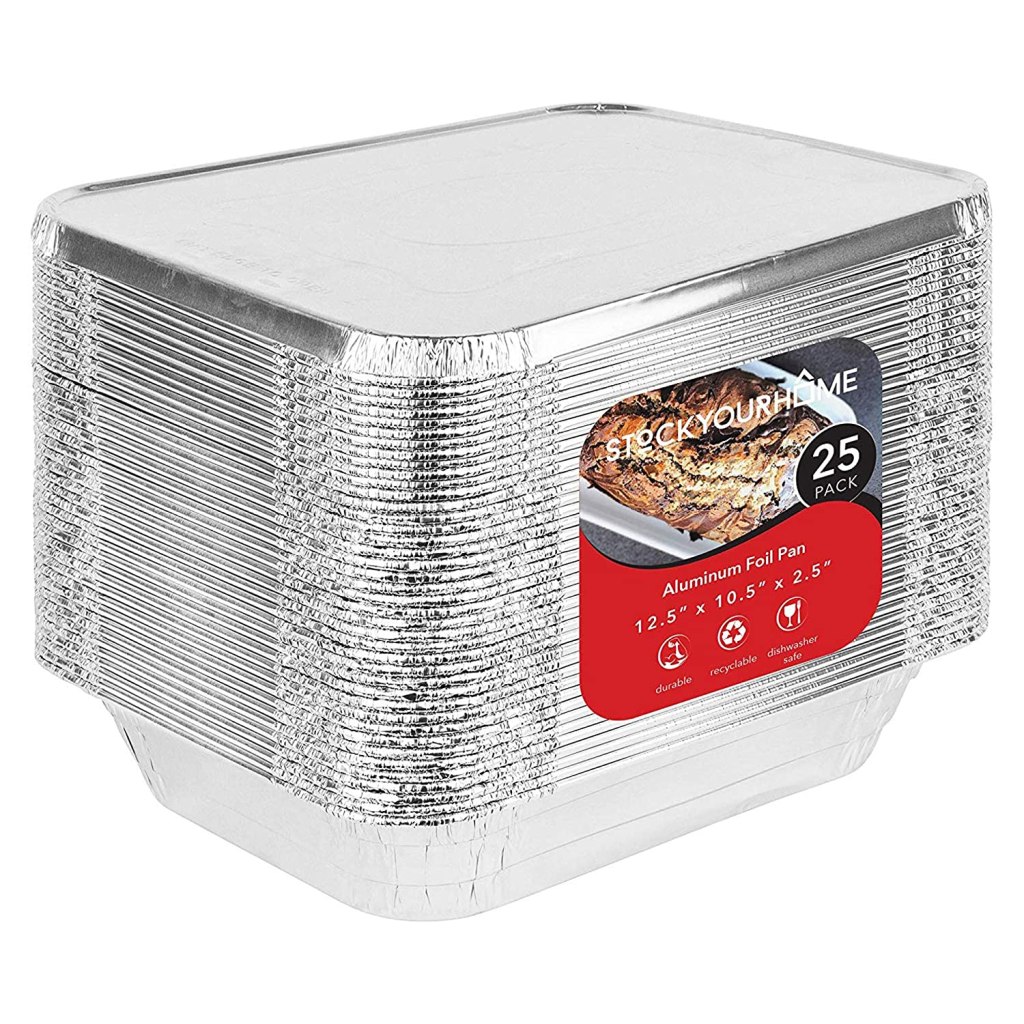One of the perks of baked dishes like casserole and lasagna is that you often have an abundance of leftovers. This is great for convenience and cost, but it's not so great if you have more leftovers than you know what to do with. If you ever find yourself with a ridiculous amount of lasagna in your fridge, you can simply freeze what you can't finish and eat it later! Here's how to freeze lasagna to enjoy when the craving hits.
Homemade Frozen Lasagna

Although freezing your leftover baked lasagna is a great solution for a surplus of lasagna, the best way to freeze lasagna is actually to do so before you bake it. Assemble your lasagna, layering the lasagna noodles with cheesy ricotta filling, ground beef or sausage if you prefer, veggies and tomato sauce, and then freeze it unbaked. This way, it'll be ready to go on a busy weeknight, and its texture will still be perfect.
Start by choosing a casserole dish. If you have enough pans to keep one in the freezer for a while, go for it, but make sure that you choose one that's freezer friendly. Double-check that it's tempered to make sure it won't break in the freezer. Another option is to use a disposable pan, which makes for super easy clean-up. These can be found at the store or on Amazon.
Once you've chosen the right pan for the job, follow your lasagna recipe up until the point of putting it into the oven. Then, let the lasagna cool to room temperature. If you put your hot lasagna into the freezer, it can cause freezer burn, which is ice crystals that form in the freezer and lead to an unappetizing, mushy texture.
Putting Your Lasagna In the Freezer

Once your homemade lasagna is fully cooled off, wrap it up with both plastic wrap and foil. Start with the plastic wrap, covering the entire lasagna. Do your best to secure the plastic wrap as close to the lasagna as possible to keep out air. Then, cover your lasagna with a layer of aluminum foil. Wrapping your lasagna helps with maintaining its texture and flavor, along with preventing freezer burn.
If you're using a glass or ceramic baking dish, start by placing the lasagna in the fridge for a few hours, and then transfer it to the freezer. This prevents dishes from cracking due to a sudden change of temperature. Keep your lasagna in the freezer for up to three months! To make it super easy on your future self, label it with the date to eat it by and instructions for reheating.
Reheating Frozen Lasagna
When you have a craving for cheesy Italian food and are ready to enjoy your homemade freezer meal, transfer your frozen lasagna to the fridge. Let it defrost overnight, and then put it onto the counter at room temperature for around 30 minutes. Take off the plastic wrap and foil and cover your lasagna with a new layer of foil.
Bake it in an oven-safe dish for about an hour or until it's fully cooked through. To get that perfect golden brown top, take the foil off and bake for about another 10 minutes. When the top is browned, let it sit at room temperature for another 10 minutes before digging into your delicious cooked lasagna!
If you've already baked your lasagna and find yourself with too many leftovers, freezing it is still an option! Although the texture won't be what it was before freezing, it'll still be a perfectly tasty meal. To freeze your leftover baked lasagna, break it into individual servings for extra convenience. Put each piece into a freezer bag or freezer-safe container. Alternatively, wrap the individual portions of lasagna in plastic wrap and then foil. Then, follow the thawing and cooking instructions above.
Serve your lasagna with extra sauce, parmesan and mozzarella cheese, and fresh herbs for a scrumptious meal!






